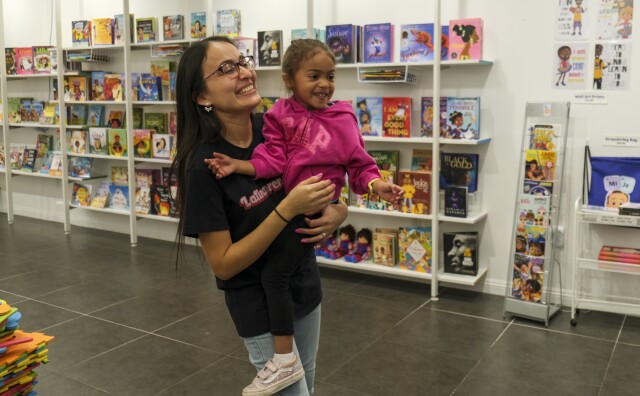As California expands transitional kindergarten at public schools to all four-year-olds, teachers have run into a more-common predicament: how do you help kids who are not potty-trained?
“It is very normal in the younger grades that those teachers will deal with accidents in the classrooms — it's just been more of a shift to students coming to school that are still in diapers and pull ups. That is a little bit different,” said Mara Harvey, president of the Natomas Teachers' Association in Northern California.
Most children are potty-trained by age 4, according to the Academy of Pediatrics, but that can also vary based on a child’s development. And even if they are potty-trained, accidents and regressions can still happen.
Teachers — unlike staff at childcare centers — typically can’t directly help a child go to the bathroom, or change their pullups or clothes. It’s not in the purview of their job descriptions, Harvey explained.
“As teachers, we don't have specific training. And I know that a lot of people think like, “oh, it's just changing a diaper, right? But we are not in a position to have any kind of contact with a student that would allow us to change a diaper … that is not part of our jobs,” she said.
What does the state require?
The California Department of Education requires districts to admit all eligible students, regardless of if they’re potty-trained or not, but leaves it up to districts on how to best address the needs of those students. The agency created a toileting tool kit for districts.
At some districts, aides and nurses can help assist kids, but at Harvey’s district, there isn’t staff trained to help (except for students who have Individualized Education Programs). When a child has an accident, or needs to change a pullup, the schools will call their parents, she said.
“For teachers, it's really just that they need direction and support as to who is responsible for this,” Harvey said.
So what can parents of TK students expect when it comes to toileting assistance for their children? Bottom line: Ask your school or district.
At Rowland Unified School District, health assistants, instructional aides, and personal care assistants are trained to help students use the restroom or help if they have an accident.
“So everybody has at least a health assistant and most everyone has one of the other two. And sometimes parents prefer to come themselves because there's parents that stay at home or closeby to the school,” said Annette Ramirez, director of student services in the Rowland Unified School District.
Coming up with a support plan
She said teachers ask parents of young students to bring an extra set of clothes, and other supplies, like pullups or wipes. If a student has an accident, they typically call the parents, but the staff on site can also help. She said teachers are often talking about what a student needs at back-to-school-nights or at conferences.
“We have a strong line of communication between school and home. And that is the first most important line to make sure that the children are safe and secure at the school site and feel good about themselves,” she said.
At Long Beach Unified, “teachers are not required to assist with toileting needs, [but] have the option to volunteer,” said a spokesperson. The district also has paraprofessionals, instructional aides and health techs who are among the staff trained in changing students.
What are teachers told?
The California Department of Education’s guidance says “[d]istricts, schools, and programs may also need to analyze current duty statements for teachers and staff and engage in bargaining with union representatives about which jobs will include direct toileting support activities such as assisting a child with changing clothing or cleaning themselves.”
At Los Angeles Unified School District, teachers, like in many other school districts, provide verbal assistance.
“Let's say there’s an accident, so we verbally talk through it with them… “Here’s a change of clothes....Change, wipe yourself. Here’s the front of your pants,’” explained Dean Tagawa, the head of LAUSD’s Early Childhood Education Division. “Meanwhile, we're reaching out to the family if they need to come and help.”
Prevention is also key. Parents should ask teachers about how often kids get bathroom breaks. Tagawa said especially toward the beginning of the year, breaks might be every 15-20 minutes.
Learning from friends might also benefit kids in getting potty-trained. “When kids go together and they see other children going and learning how to toilet train, it makes it easier for them to have a model … A lot of times it takes them, a week or two weeks to become fully potty trained,” Tagawa said.










